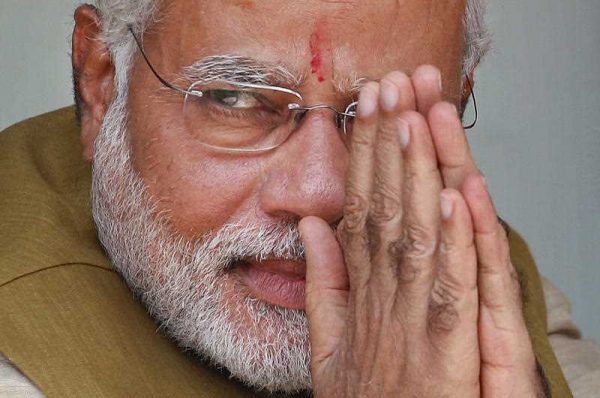He led his Bharatiya Janata Party (BJP) to an absolute parliamentary majority for the first time, while reducing the long dominant Indian National Congress (INC) to a seat total too low to qualify for official parliamentary opposition status. In office since May, Modi has taken a flurry of high profile international visits. This led Singapore’s Straits Times to choose him as their Asian of the Year, while readers of Time magazine voted for him Person of the Year. But it is unclear if much has really changed.
A trip to the United States in September was illustrative. An unqualified public relations success, it included a rapturous reception from the Indian-American community at New York’s Madison Square Garden, being feted by Hollywood celebrities in Central Park, and a UN General Assembly speech which featured a call for an international yoga day. An op-ed jointly authored with President Barack Obama spoke in glowing terms of shared values and interests. Obama agreed to be guest of honour at India’s annual Republic Day celebration in January 2015. Yet, substantively, Modi’s US visit achieved only modest gains, with a billion dollar package aimed at promoting clean energy in India taking centre-stage.
Modi’s visits with other world leaders confirm the continuity in Indian foreign policy. A trip to Brazil reaffirmed India’s commitment to the BRICS group’s efforts to balance the West. A state visit to Japan and visits to India by Chinese President Xi Jinping and Russian President Vladimir Putin resulted in many substantive agreements. India’s Look East strategy was underscored with trips to Fiji, to Myanmar to attend the ASEAN summit, and to Australia where Modi combined a G20 summit with a state visit and addressed the Australian parliament. The Putin visit stands out. While the West worked to isolate Russia over Ukraine, Modi reaffirmed Russia’s historic ties to India, including as India’s principal defence supplier. Perhaps the only important shift in India’s foreign policy is a shift on the Middle East in favour of Israel.
While Modi’s foreign policy makes clear his priority is development, this may not presage sweeping liberalisation. Unabashed in his desire for foreign investment, especially in infrastructure, Modi’s approach to trade negotiations remains nationalistic, most prominently by vetoing a WTO agreement over provisions on agricultural subsidies. Moreover, the government does not enjoy a majority in the upper house of parliament, elected by state legislatures, which is preventing critical economic legislation from passing. The reform agenda has therefore consisted of efforts to speed up bureaucrats, weaken environmental regulations, and mobilise civil society through quixotic initiatives like Swachchh Bharat (mobilising volunteers to ‘clean India’), and the Saansad Adarsh Gram Yojana, which encourages members of parliament to adopt one village in their constituency as a model village.
The BJP’s winning streak in state elections may change this. Of four elections since May, the BJP has won three — Maharashtra in the west, Haryana in the north and Jharkhand in the east. All were previously under INC-led governments. It also emerged, for the first time, as contender for power in the disputed, Muslim-majority state of Jammu and Kashmir. Nationally, the INC appears in complete disarray with Muslims — one of its core constituencies — turning away. Meanwhile, powerful anti-BJP chief ministers in Tamil Nadu and West Bengal have faced major corruption charges, weakening their ability to anchor anti-BJP alliances. The only sign of life in the opposition is the potential merger of various regional factions of the erstwhile Janata Dal.
The Kashmir elections highlighted the absence of progress on relations with Pakistan. The meeting of the South Asian Association for Regional Cooperation (SAARC) in Nepal was dominated by reports of a Modi snub to Pakistani Prime Minister Nawaz Sharif and a subsequent handshake. But the Modi government has not adopted a more aggressive posture toward Pakistan, either. It appears to be reaching out actively to other neighbours, such as Bangladesh, with whom Modi appears to have overruled more hardline views in his own party on a border dispute, and Sri Lanka, whose record on treatment of its Tamil minority is controversial among Indian Tamils.
One cause for concern is the sway of the BJP’s core Hindu nationalist constituency. Several actions appear to politicise education and weaken India’s commitment to secularism. These include: the appointment of a controversial scholar to head the main historical association with oversight over textbooks; a mid-year decision to replace the teaching of German with Sanskrit in government schools; and proposals to declare the Bhagavad Gita a ‘national scripture’. Actions by legislators, regional leaders or allied organisations have also caused the government embarrassment. Apparently anti-Muslim statements in Parliament by a minister, the declaration that the Taj Mahal was a Hindu site, and apparent attempts at the forcible conversion of Muslims to Hinduism all feed into these concerns.
But in all other areas, the BJP has governed conventionally. The perfect metaphor for Modi’s first six months in office was India’s successful launch of a probe to orbit Mars. While the launch fit neatly into Modi’s favourite rhetorical motif of India as an ancient civilisation finally on the move again, the groundwork was laid by the previous INC government. In this, as in much else, Modi is reading a script written by his predecessors — albeit with more style. For a new script, we will have to wait.
Arun R. Swamy is Associate Professor of Political Science at the University of Guam.
This article is part of an EAF special feature series on 2014 in review and the year ahead.

